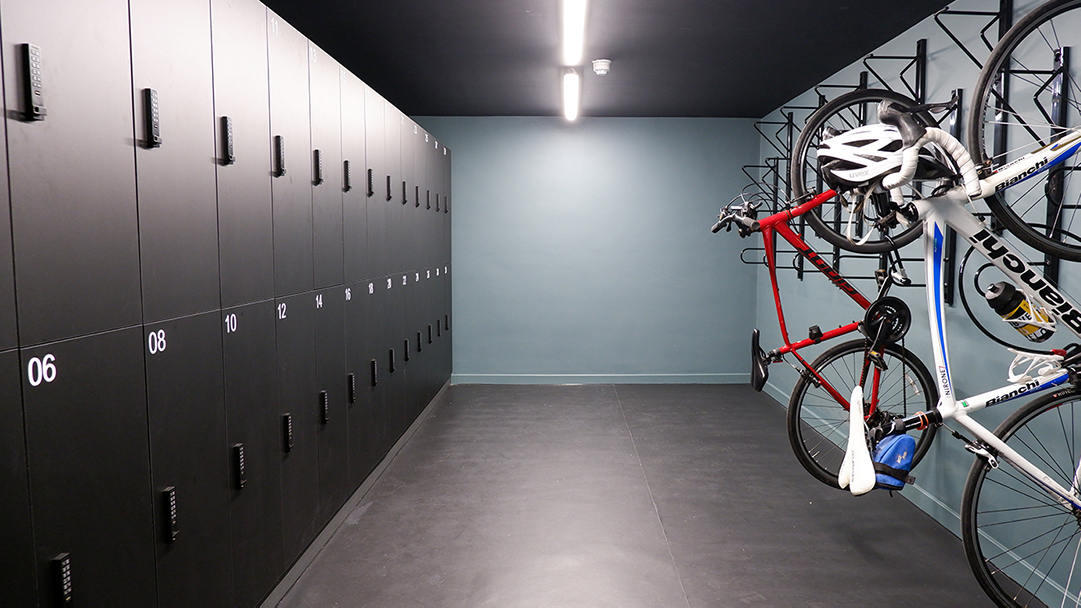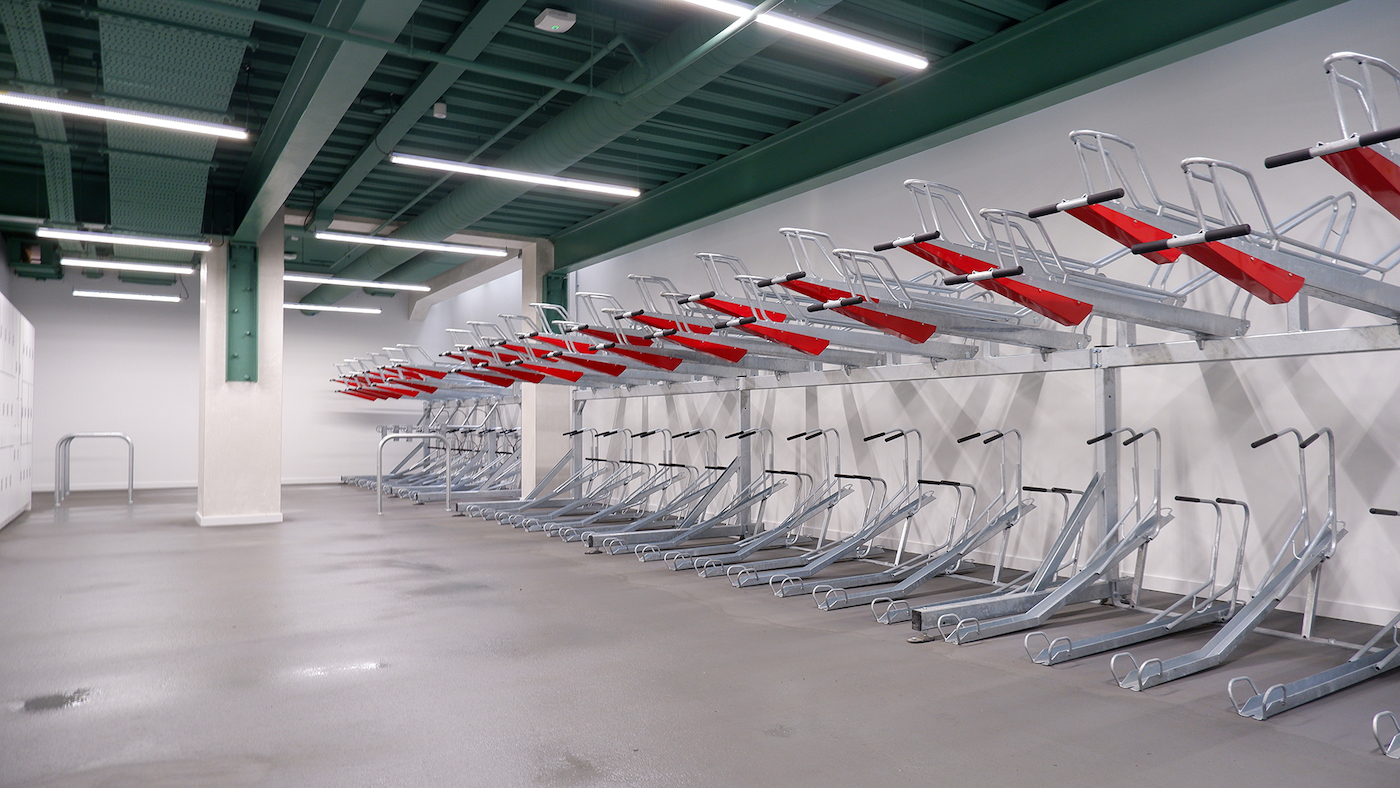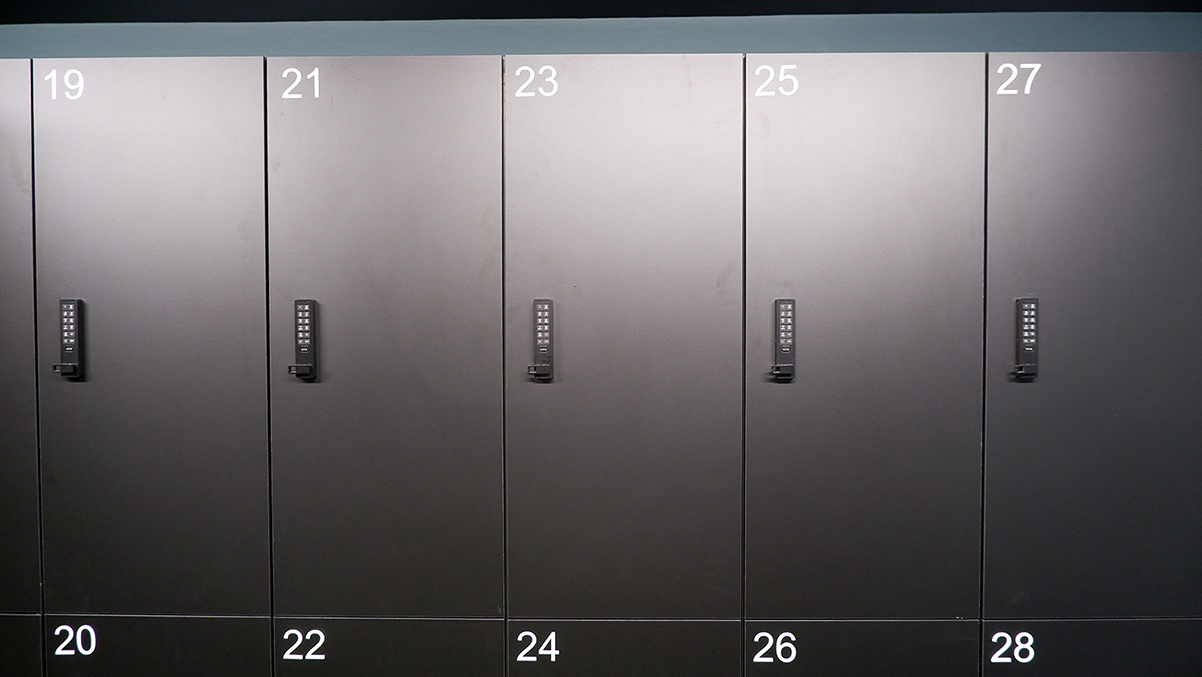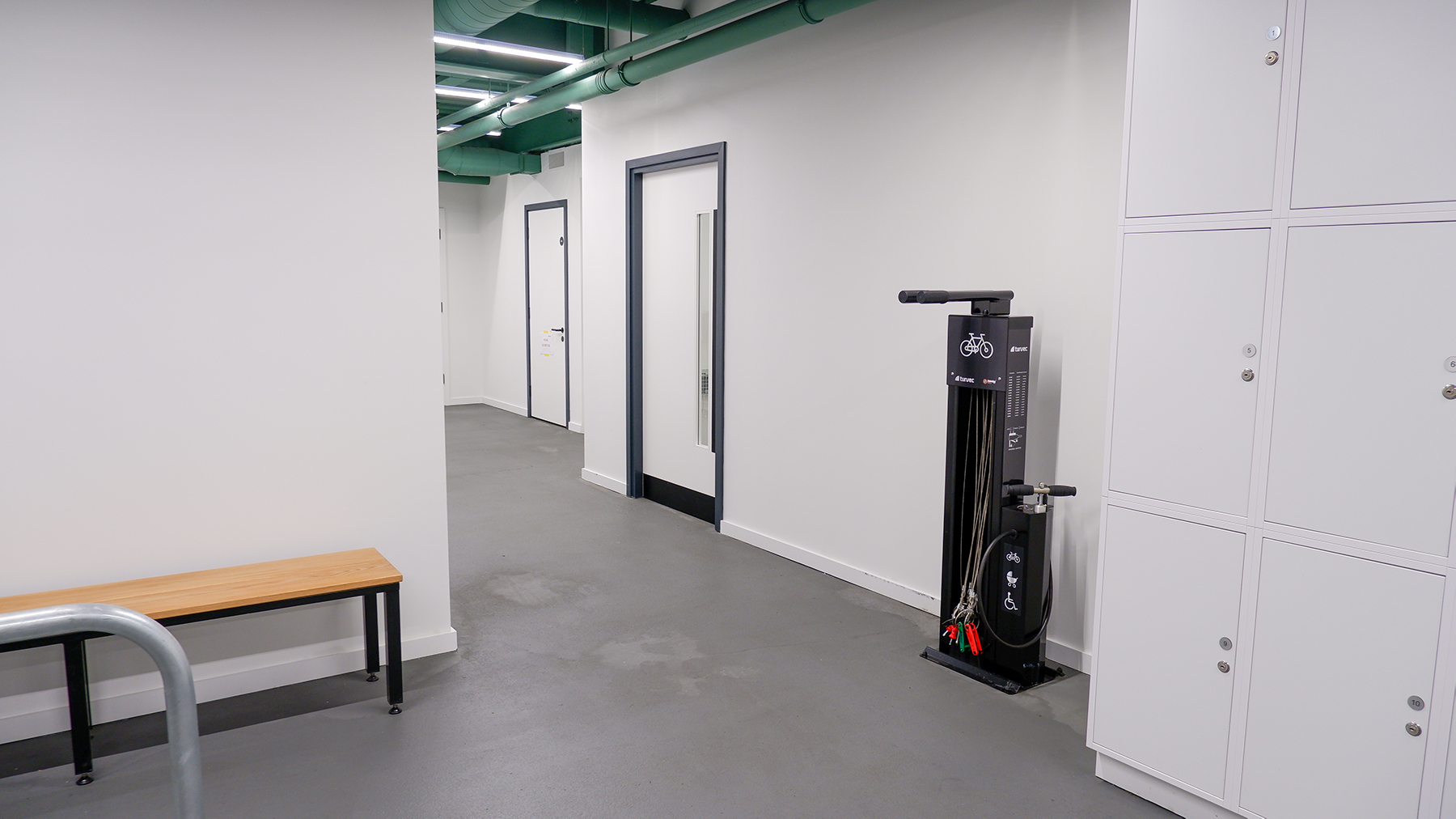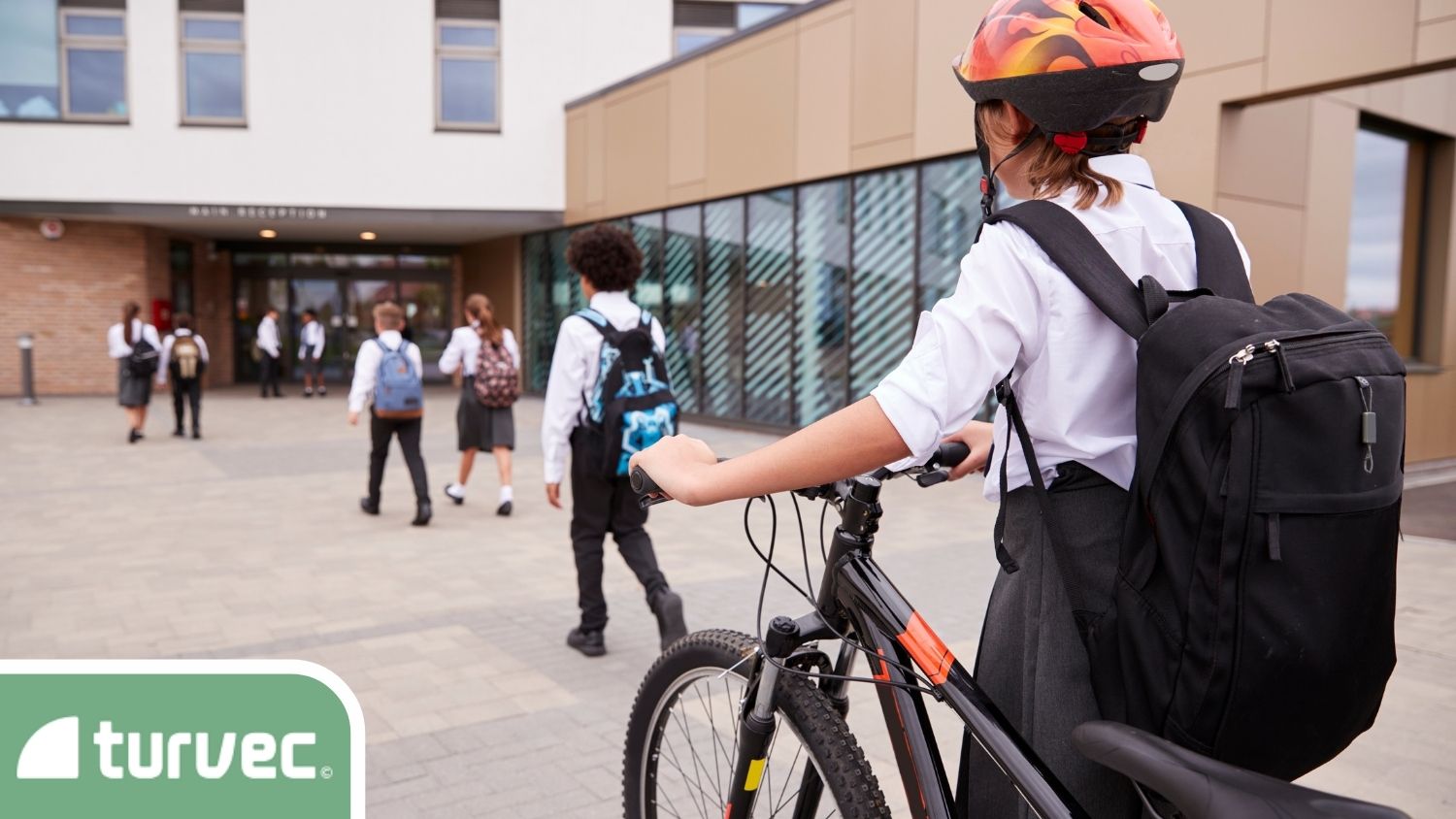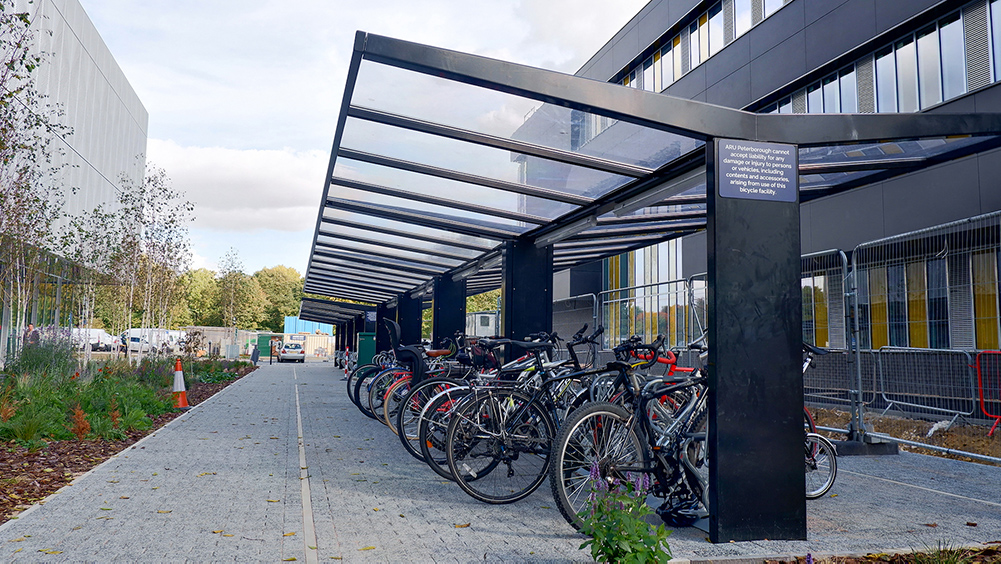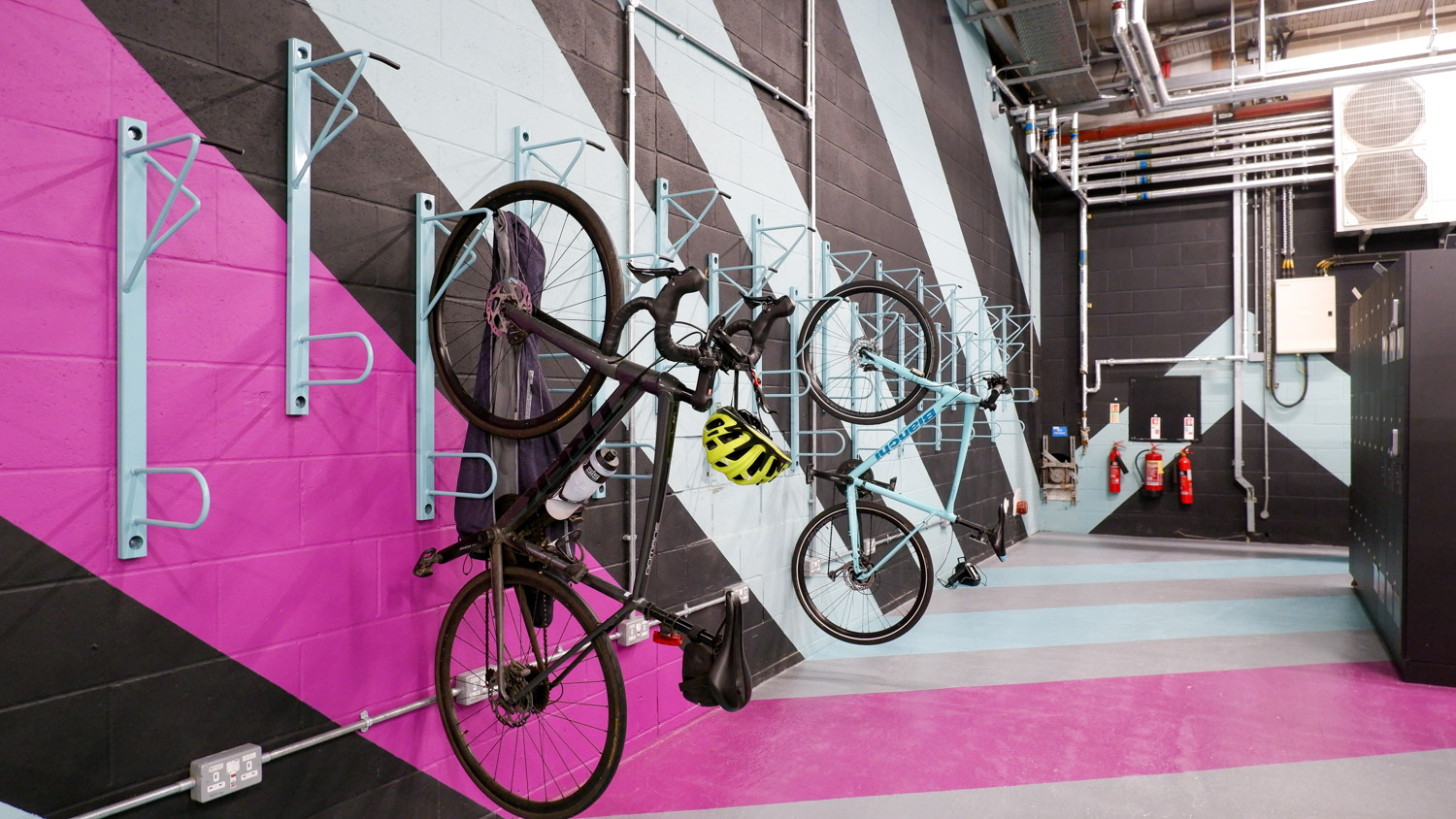“Are you looking for hybrid, or remote working?”
That now common recruiter’s question has become a sign of a changed office landscape, with many companies and employees searching for their ideal office/working from home split.
And while some CEOs have recently predicted a change back to full-time office culture, with some employees far less receptive to the idea, the office is certain to live on. In fact, you could argue the office building has an even bigger role to play.
That’s where end-of-trip facilities – or EOTs – come in. As tenants demand better facilities, letting agents and employers are keen use them both as a way to market the office space, and to attract their employees back into the office.
Why are these facilities important? How can they transform an office building? And what are the key ingredients of good EOTs?
Why are end-of-trip facilities so important?
End-of-trip facilities encompass the cycle parking, changing areas, showers, and all ‘journey end’ facilities in a building that are most commonly used by active commuters.
Since the COVID-19 pandemic, the office has seen a seismic shift in occupancy rates, and in turn, its core function changing as a building and workspace.
No longer do businesses expect an office full of employees five days a week, instead the office building has become a part-time hybrid companion to the home office, and must do even more to help support employees when they’re in the office.
A major factor developing alongside the shift in office time is a sharper focus over the last decade on employee health and wellness.
The benefits of focusing on employee health for a business are vast, and many require the office building to help facilitate this.
With more emphasis on social workplaces, breakout areas, and pods to relax or focus, the modern office floor is a million miles from the grey, functionality focused 1950’s office.
An active commute – either walking, running, cycling, scooting, or wheeling to the office – has become an integral part of the working day.
Not only can this physical activity directly support mental health, but there are social benefits to be had from running clubs across different companies in a co-working office, or even workplace yoga, rounders, tennis, or any physical, social activity.
End-of-trip facilities help buildings encourage the active commute. Additionally, those changing and locker facilities can also support lunchtime gym-goers, running clubs, and all manner of physical activity.
